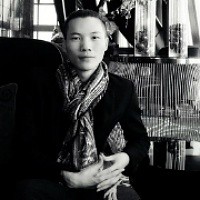查看完整案例


收藏

下载
来自地方工作室
Appreciation towards WCY Regional Studio (email: ) for providing the following description:Tian Han is the pioneer and principal founder of the development of Chinese modern drama art. On Mr. Tian’s 120th birthday, the local government built a cultural park of integrating display, drama performance and local drama training in his hometown of orchard town, Changsha, in order to commemorate Mr. Tian’s great artistic achievements and unyielding spirit.
规划布局 | Master plan
文化园地处市郊,基地周边水田环绕、阡陌交通,属典型的湘北地区山水田园类型。伴随着城市的扩张蔓延,建设用地受到来自市政基础设施的影响较大,三条高压电线和石油管道穿行其间、分割场地,居于田中央的属性也需保证项目的建设不能破坏区域的原有灌溉体系。
The cultural park is located in the suburbs of the city, surrounded by paddy fields and field lane that is a typical landscape garden in the north of Hunan. With the expansion of the city, the construction site is greatly affected by the municipal infrastructure. Three high-voltage electric wires and oil pipelines pass through and divide the site. The composition in the center of the field also needs to ensure that the construction of the project cannot destroy the original irrigation system in the area.
▼总平面图,master plan
规划设计根植于田野与村落原生自然的空间关系,借用散点透视的建构方法积极回应场地的不利因素,并将各具意义的功能体依据其分解的零散地块的地点要素作适应性的嵌入。总体布局以田汉故居为依托,将艺术陈列馆、艺术学院、游客服务接待中心、老戏台、国歌广场、田汉铜像以及戏曲艺术街等功能体相互关联同构,略呈环状的游园路径将其有机串联,单体建筑自成体系,或与田地肌理顺应对接,或与村庄聚落对仗呼应,和周边环境保持着某种持续的关联,产生了具有丰富趣味性和多向性的游览体验;同时,为体现抗争和不屈的“田汉风骨”,建筑形态强调“水平性”和“抓地性”两个空间特征,建筑锚固于大地,以青砖、混凝土、水泥瓦、木材等传统材料建造,清灰绵长的体量匍匐于原野之中,有力度的仪式性连续弧形墙面承载着光的律动,悬浮的折形和厚重的反弧拱形屋顶展现出原朴、苍劲之感,仿佛将建筑置于时间的长轴之上,呈现出纪念性建筑的岁月留痕与历史积淀。
规划设计根植于田野与村落原生自然的空间关系,The master planning is rooted in the spatial relationship between the field and the native character of the village. The tectonic method of scatter perspective is used to actively respond to the unfavorable factors of the site, and the meaningful functional blocks are adaptively embedded according to the location elements of the scattered site. The overall layout is based on the former residence of Tianhan, and the art gallery, art college, visitor service center & hotel, ancient opera stage, the square of the national anthem, Tianhan bronze statue and opera street are related to each other, and organically linked by the slightly circular path of the garden. The single building is self-contained, or responds to the field texture, or echoes with the village settlement, and maintains a certain continuous relationship with the surrounding environment, resulting in an interesting and multi-directional tour experience. At the same time, in order to reflect the “Tian Han’s personal character” of resistance and unyielding, the architectural form emphasizes two spatial characteristics of “horizontality” and “anchoring”. The building is anchored to the earth and constructed with traditional materials such as brick, concrete, cement tile and wood. The long and gray blocks is in the wilderness. The ceremonial continuous curved wall carries the rhythm of light, the suspended fold and the thick inverted arched roof show the original and vigorous feeling. It seems that the building is placed on the long axis of time, showing the lingering traces and historical accumulation of the monumental architecture.
艺术学院 | Art College
设计寻求的原型是湖南地区的书院建筑,尤其是岳麓书院的“斋”空间,其最显著的特征:“斋”是均质的,“斋”与“斋”之间呈平行线性关系,它们由公共连廊连接,分割生成的庭院天井满足采光通风、集雨排水的功能。艺术学院包含艺术教室、艺术沙龙和小型实验剧场,设计延承“斋”的空间格局,三列均质体量平行并置形成空间序列,并依据空间需求水平向错动;艺术沙龙的方体游离于主体建筑一端,两向拉开形成巨型檐下空间,而留白的内天井自然成为场所的核心,入口方向的巨柱伞形空间和侧向水平檐廊的视觉焦点汇聚于此,交互并产生具有透明性的深景空间;同时,这处充盈着阳光和风雨的具有地方传统建筑基因的内天井和围廊空间,亦是作为开放式实验剧场的一种延展的观演之处。
▼艺术学院外观,exterior view
▼建筑延承“斋”的空间格局,the design of Art College is inspired by the space of “Zhai”
The prototype sought by the design is the college building in Hunan, especially the space of “Zhai” of Yuelu Academy. Its most notable feature is that “Zhai” is homogeneous, and there is a parallel linear relationship between “Zhai” and “Zhai”, which are connected by a public corridor, the courtyard patio formed by the division meets the functions of lighting, ventilation and drainage. The art college includes art classrooms, art salons and small experimental theaters. The design extends the spatial pattern of “Zhai”,that the three homogeneous masses are parallel and juxtaposed to form a spatial sequence, and are arranged according to the function of space demanded; the block of the art salon is separated from one end of the main building and is opened in two directions to form a giant porch space, the white inner courtyard naturally becomes the core of the place. The large column umbrella alike space in the entrance direction and the visual focus of the horizontal gallery converge here, interacting and creating a deep space with transparency; at the same time, this inner patio and corridor space with local traditional architectural genes filled with sunlight and wind and rain is also an extension of the open experimental theater.
▼巨型檐下空间,thegiant porch space
反弧形拱顶是以传统建筑坡屋顶的排水起翘转换而来,并结合弧形摆线修正生成,每跨拱顶通过两侧后退的双柱顶起,跨与跨之间形成类似多米诺的结构体系;反拱形屋顶在入口端处则结合空间需求异化为独立巨柱承载,反拱与功能体脱离,弧形的底面在阳光下呈现出曼妙的光影渐变;建筑的横断面清晰地的呈现出连续的伞形基本空间,结构体系与维护体系在此处清晰的剥离,墙体顶部与拱顶的侧翼有意断开,或以镂空或以弱连接的横向长窗强化空间的结构逻辑。
▼轴测图,axon
The inverted arc vault is converted from the drainage uplift of the traditional building sloping roof and is combined with the curved cycloid correction. Each span of the vault rises through the two columns receding on both sides, forming a similar domino-like structural system between span and span; the inverted arched roof is combined with the space requirement, which supported by giant column independently at the entrance end. The inverted arch is separated from the functional body, and the curved bottom surface presents a graceful light and shadow gradient in the sunlight; the cross section of the building is clearly demonstrate the continuous umbrella-shaped basic space, the structural system and the maintenance system are clearly stripped here, the top of the wall and the flank of the vault are intentionally disconnected, the structural logic of the space is strengthened by hollowing out or weakly connected horizontal long windows.
▼庭院,courtyard
▼反弧形拱顶,theinverted arc vault
▼水池区域,pool area
▼室内空间,interior view
艺术学院平面图,Art College site plan
艺术学院立面图,Art College elevations
艺术学院剖面图,Art College sections
艺术陈列馆 | Art Gallery
陈列馆为文化园的核心建筑,建筑呈线性布置,超长的体量横卧场地,是展示田汉先生生平和主要事迹的纪念性空间。
The art gallery is the core building of the cultural park, the building is linearly arranged, and the long-length block is lying on the ground. It is a monumental space to show Mr. Tian Han’s life and main deeds.
▼艺术陈列馆外观,exterior view
▼超长的体量横卧场地,thebuilding is linearlyarranged on the ground
立面细部,facade
正面的连续弧形墙身与屋顶脱离并独立存在,呈交错状通透的围合墙体与建筑主体外墙形成狭长的前导空间,光从墙的尽头一侧倾洒向地面,制造出一种略显不可捉摸的深景透视关系;山墙面与屋顶分离消解了传统构筑的简单承载和黏连关系,在传统双坡屋面的基础上,屋顶拓扑连续转换至墙体,另一部分则向上掀起,引入高侧自然光。
▼轴测图,axon
The front continuous curved wall is separated from the roof and exists independently. The staggered transparent wall forms a narrow leading space with the external wall of the main building. Light is poured from the end of the wall to the ground to create a slightly unpredictable deep perspective relationship; the separation of the gable and the roof eliminates the simple bearing and adhesion relationship of the traditional construction. On the basis of the traditional double-slope roof, the roof topology is continuously converted to the wall, and the other part is upward to introduce high side natural light.
▼入口区域,entrance area
▼呈交错状通透的围合墙体与建筑主体外墙形成狭长的前导空间,the staggered transparent wall forms a narrow leading space with the external wall of the main building
▼以玻璃围合的首层立面,the space of ground floor is enclosed by glass
艺术陈列馆的西北端朝田野和远山方向打开,为保证空间的通透,室内腔体嵌入通高的双层混凝土竖筒以承载近20米出挑的屋顶,从而替代通常设计中的匀致柱网,形成平滑幽深的门型景框,使上层悬出的平台视野更加深远,强化了景观的延展;同时,粗壮有力的巨型结构竖筒锚固于大地,暗示中流砥柱和精神脊梁之意,圆筒内朝向天空的倒锥形空间产生较为强大的视觉冲击和扩大的声场,以一种向天际呐喊的“通天巨塔”的形象赋予建筑某种神性的隐喻。
The northwest end of the art gallery opens in the direction of the field and the distant mountains. In order to ensure the transparency of the space, the indoor cavity is embedded in a double-deck concrete column to support the cantilevered roof of nearly 20 meters, thus replacing the uniformity of column system in the common design, that forms a smooth and deep door-shaped frame, which makes the platform view of the upper layer more far-reaching and strengthens the extension of the landscape. At the same time, the thick and powerful giant structural column is anchored to the earth, suggesting the meaning of the mainstay and the spiritual backbone. The inverted cone-shaped space in the cylinder facing the sky produces a more powerful visual impact and an enlarged sound field, giving the building a certain metaphor with the image of a “giant tower” that screams to the sky.
▼陈列馆内部,interior view
▼粗壮有力的巨型结构竖筒锚固于大地,the thick and powerful giant structural column is anchored to the earth
▼轴测图,axon
▼艺术陈列馆平面图,Art Gallery plan
▼艺术陈列馆剖透视图,Art Gallery sectional perspective
戏曲艺术街和游客服务中心 | Opera Street and Visitor Service Center & Hotel
设计思路贯穿了“日常性”与“仪式性”二元关系的转换与平衡:日常性转换为仪式性,而仪式性又回归日常、融入大地。
The design idea runs through the transformation and balance of the “dailiness” and “ritualism” binary relationship: the daily transformation is ritual, and the ritualism returns to the daily life and into the earth.
戏曲艺术街外观,Opera Street
▼外观细部,detailed view
艺术街的设计是向当地聚落的致礼,以当地民居小合院为原型,各个单元既保持相对独立性,又构成街与巷的意向,呈现一种自由的散点透视的景象;界面以及街巷转角刻意呈现出戏剧化布景效果,为将来实景话剧的演出做预设,是满足现代教育功能的日常性营造。游客服务接待中心是当代窨子屋的组合,含有一个内庭院,通过底层架空与服务中心切开的半个透空的窨子屋相联系,朝向西面主入口,浑厚的半圆筒排水天沟承接三面架空大屋顶的雨水,塑造出具有仪式感的轴线对位的空间秩序。
The design of opera street is a gift to the local settlements. It is based on the local residential small courtyard. Each unit maintains relative independence and constitutes the intention of the street and the lane, presenting a scene of free scatter perspective; The corners of the street deliberately present a dramatic set effect, presupposing the performance of the real-life drama in the future, and this daily creation satisfying modern educational functions. The visitor service center & hotel is a combination of contemporary “Yin Zi” houses with an inner courtyard that is connected to the half-empty “Yin Zi” house cut by the service center through the stilted ground floor, facing the main entrance to the west. A thick semi-cylinder drainage gutter undertake the rain on three large overhead roofs to create a spatial order with a ceremonial axis alignment.
▼戏曲艺术街的设计以当地民居小合院为原型,各个单元既保持相对独立性,the design of Opera Street is based on the local residential small courtyard, where each unit maintains relative independence and constitutes the intention of the street and the lane.
戏曲艺术街平面图,Opera Street plan
戏曲艺术街立面图,Opera Street elevations
戏曲艺术街剖面图,Opera Street sections
游客服务接待中心,visitor service center & hotel
▼浑厚的半圆筒排水天沟承接三面架空大屋顶的雨水,athick semi-cylinder drainage gutter undertake the rain on three large overhead roofs to create a spatial order with a ceremonial axis alignment
▼轴测图,axon
▼游客服务接待中心平面图,visitor service center & hotel plan
▼游客服务接待中心剖面图,visitor service center & hotel section
结语 |Conclusion
文化园四周稻田环绕,水系纵横,设计在园区周边以及场地之中保留和恢复了原生水系,游人和周边的村民可以自由地穿行其中。夕阳暮色下,人们徜徉于园区,穿梭于阡陌田埂偶有起伏的石板路上,拉长的光影投向静卧的长墙面。蛙声蝉鸣,伴随着薄雾的轻轻升起,仿佛可以感知到:苍穹与大地之间,当人造物成为仪式化的精神媒介,承接来自泥土与天空的尘与光,建筑经历风霜的洗礼匍匐在田野墨色之上,仿佛已将田汉先生的精神风骨缓缓地融入其间。
The cultural park is surrounded by rice fields and water system, the design aimed to preserve and restore the original water system around the park and within the site, that visitors and surrounding villagers are free to walk through it. Under the twilight of sunset, people lingered in the park, and passed through the undulating stone roads in the fields, and elongated light and shadow cast on the long wall. The frog humming, accompanied by the gentle rise of the mist, seems to be able to perceive: between the sky and the earth, when the artifact becomes a ritualized spiritual medium, it takes the dust and light from the earth and the sky, and the building experiences baptism through the wind and frost on the top of the field, as if the spirit of Mr. Tian Han has been slowly blended into it.
项目名称: 田汉文化园
建筑事务所: 地方工作室
主创建筑师: 魏春雨 黄斌
设计团队:吕昌 欧阳胜 王宇星 尤志川 顾紫薇 范鹏 李矗 郭文浩 李沁 王佳楠 董新蕊 刘桐 杨忞 尹帅 黄立君
项目详细地址: 湖南省长沙县果园镇田汉村
项目完成年份:2018年3月
建筑面积:(平方米):12432平方米
摄影师: 姚力 胡骉(数智营造工作室) 齐靖
其他参与者:业主:长沙县果园镇人民政府
机电设计:湖南大学设计研究院有限公司设备所
室内设计:长沙视码空间设计有限公司
景观设计:湖南水立方建筑与景观设计有限公司
古建设计:湖北中艺古建园林工程有限公司
Project Information
Project name: Tian Han Cultural Park
Architect’ Firm: WCY Regional Studio
Lead Architects: Chunyu Wei, Bin Huang
Design Team: Chang Lyu, Sheng Ouyang, Yuxing Wang, Zhichuan You, Ziwei Gu, Peng Fan, Chu Li, Wenhao Guo, Qin Li, Jianan Wang, Xinrui Dong, Tong Liu, Min Yang, Shuai Yin, Lijun Huang
Project location: Changsha County, China
Completion Year: 2018
Gross Built Area (square meters):12432㎡
Photo credits:Li Yao, Biao Hu(Digital Photography Studio), Jing Qi
Other participants (eg. collaborators, clients, consultants, etc):Client: People’s Government of Guoyuan Town, Changsha County
MEP: Institute of MEP of Hunan University Design intitute Co ., LTD
Landscape Architecture: SLF Landscape Architecture Co ., LTD
Ancient Building: Hubei Hongfengye Landscape Architecture Co ., LTD
Interior Design: Changsha Shima Space Co ., LTD
地方工作室





































































